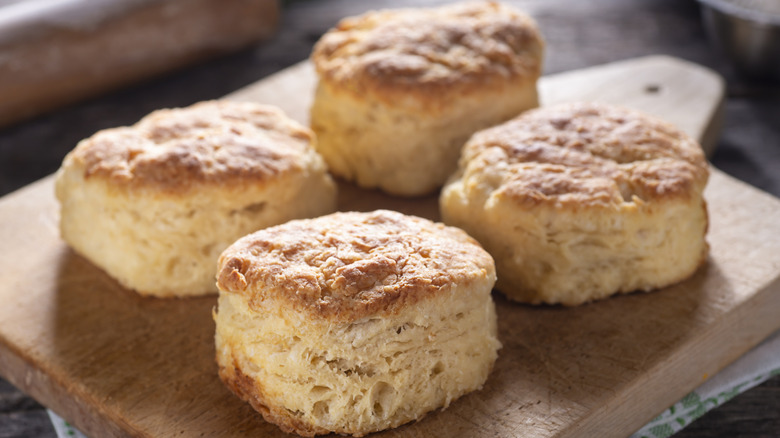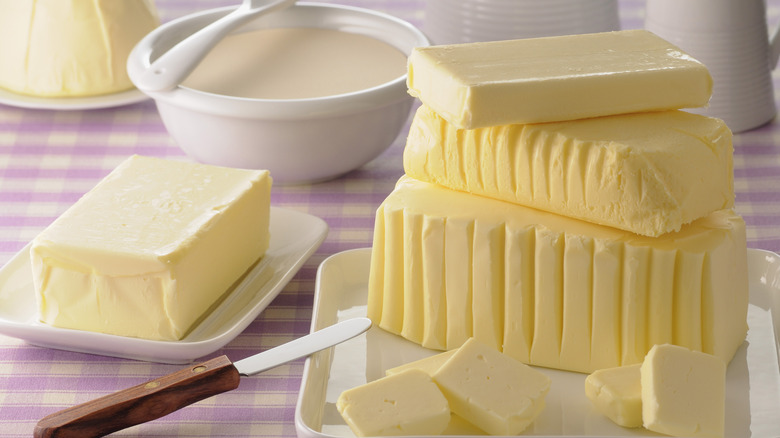Is European Butter The Secret To Better Biscuits?
Perfecting the art of biscuit-making is no easy feat. Of the many tips and tricks that promise a knock-out result, the most important element is starting with quality ingredients, especially good butter. While there's a vast range of options including cultured, grass-fed, and salted butters, the one style that proves to be the sweetheart of many is European butter. The question is, does this ultra luxe butter actually produce a better biscuit?
The process for making any kind of butter is always the same — dairy is churned until the butterfat separates from the buttermilk. What differentiates European butter is that it is churned longer to achieve a butterfat content that ranges from 82% to 86%, as regulated by the European Union. In contrast, the USDA states that American butter must have a minimum butterfat content of just 80%. Because European butter has more fat and less water, it adds decadence to biscuits, positively affecting flavor. Likewise, this richness impacts texture.
Opting for European butter is a must if your goal is to make biscuits that boast an extremely buttery taste and an ultra flaky texture. As the creamy butter melts, it releases steam that becomes trapped in the dough. This creates numerous layers of crisp flakiness (and a fuller mouthfeel), similar to what happens with the laminated pastry doughs that are typical of buttery croissants and pie crusts. Wonderful as it seems, though, this doesn't mean European butter should be your go-to for all biscuit recipes.
Better for flavor and flakiness, but not necessarily fluffiness
European butter might reign supreme in flaky biscuits, but it isn't ideal when you want fluffy biscuits. Due to its additional butterfat, you risk weighing down the crumb in recipes that prioritize a soft and airy interior when you use it. European butter's limited water content might even lead to more dry and brittle biscuits. Consequently, using a lower-fat butter can prevent disappointing textures when the focus is achieving a light and fluffy outcome. Just bear in mind that flavors won't be as rich and complex with American butter.
Despite that the taste and texture of a biscuit will be impacted depending on which butter is used, it won't make or break the end result. In fact, the differences between butters tend to be relatively minimal. Since all butter contains a significant amount of fat, a touch more or less isn't likely to change the composition of the dense biscuit dough too heavily, which is why it's alright to use American and European butter interchangeably. That said, while American butter is a good default to use in biscuit recipes, don't shy away from experimenting with fancy European options like vibrant Kerrygold, nuanced Isigny Ste. Mère, or even American-made Plugrà.
At the end of the day, making a better biscuit is all about butter quality, although the exact variety largely depends on preference. European or American, the best butter is really in the eyes of the biscuit maker.

